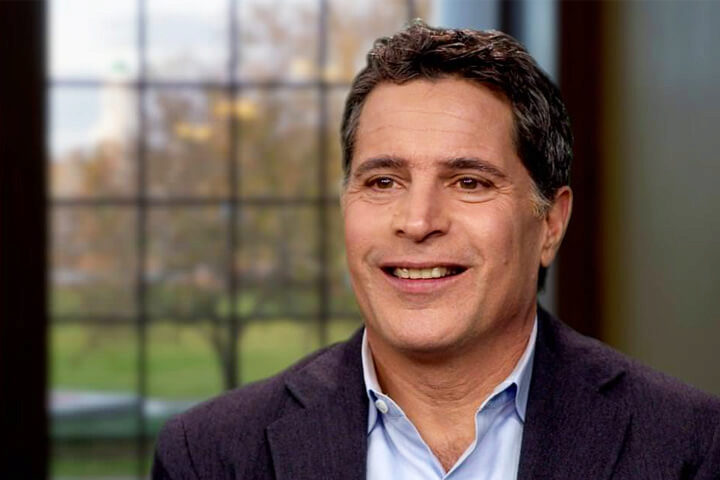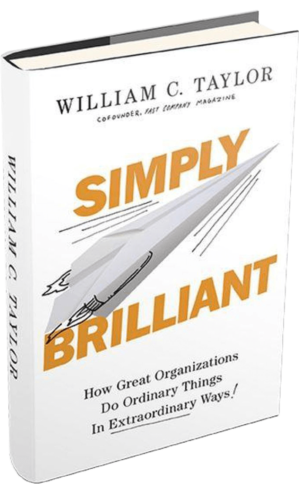How can long-established and traditional organizations keep pace with innovations emerging in places like Silicon Valley? On this episode of Mastering Innovation on Sirius XM Channel 111, Business Radio Powered by The Wharton School, guest Bill Taylor, co-founder of Fast Company Magazine, shared his thoughts on how companies and leaders can learn to be successful innovators.
Taylor explained the importance of tackling three big questions around innovation: Is there a definition of success that is original and inspires others? Is the culture of innovation reflected in how teams compete and innovate? And, on an individual level, are the leaders determined to challenge the limits of their imagination? He described four types of leaders who had successfully answered these questions: the Learning Zealot, the Personal Disruptor, the Tough-Minded Optimist, and the Eager Experimenter.
An excerpt of the interview is transcribed below. Listen to more episodes here.
Transcript

Bill Taylor: The great piece of unfinished business in the economy is to help organizations that have been around for 60 years or 100 years embrace the spirit of renewal and reinvigoration and innovation that gives them a new lease on life. Part of that is strategic, part of that is behavioral on the culture of innovation, part of it is new ideas about leadership and change, and so on, but to me, at least in terms of what I think of as the great piece of unfinished business right now, that’s where I’ve been spending a lot of my time.
Harbir Singh: There was a list of the top 10 most innovative companies. There are several lists, but in that particular list in The Wall Street Journal, there were six of them post-1983 in founding, but you did have 3M, Procter & Gamble, Johnson & Johnson, and companies that you’re talking about, which are longer-lived. That’s really what the Mack Institute focuses on. We focus on innovation in the established corporation. Part of the things I wonder about is the survivor bias when we look at successful companies. We look at companies that have succeeded, and we say, “This is the reason why they’re successful,” but companies that fail, they may have applied some of those same techniques.
Taylor: True enough, which is why I certainly am very modest in my writing, in my thinking, and in my storytelling, which I do a lot of. I don’t think that somehow, I’ve cracked some immutable code, and there are the five principles of innovation, leadership, and change that will somehow always work or anything like that. The best I can do, as someone who thinks and writes about these topics, is to be a little provocative to simply show folks what I’ve seen. You’re right. It’s a lot more fun and a lot easier to write about success and survivors than to write about failure and folks who didn’t cross the chasm as it were, so I bring to everything I do a certain modesty.
This is, in many respects, how leaders learn: insights and ideas that might get people thinking in a slightly different direction. I tell some stories about, usually, successful innovation and transformation that maybe gives people a bit more confidence that, “Hey, if the folks in the construction business can do it, then I should be able to do it as well.” Then finally, I bring a few techniques, tactics, questions to ask that I hope people can use to, every so often, reflect on the assumptions they’re making about what the job of a leader is today.
Singh: One of the lessons from your article on smart CEOs is that you don’t have to be a tech company to innovate. Innovation is across multiple sectors.
Taylor: Oh my goodness. That’s absolutely one of my most important messages. To me, there are three big questions that organizations and leaders have to ask themselves if they want to go about the business of innovation. The first one is, do we have a definition of success for our enterprise that allows us to stand out from the crowd and that inspires others to stand with us? More than anything, innovation is about originality. It’s no longer about being the best at what lots of other people already do. It’s about being, one way or another, the only one who does what you do. What do you promise that only you can promise? What do you deliver that nobody else can deliver? What are you prepared to do as an organization that other organizations in your fields can’t or won’t do?
“What do you deliver that nobody else can deliver? What are you prepared to do as an organization that other organizations in your fields can’t or won’t do?” – Bill Taylor
The first piece of innovation and strategy is originality. Then, the second big piece of it: to be in a world that is in so many ways being reshaped by technology, what really matters now, more than ever, is a deeper and more authentic sense of humanity. If you want to think about innovation, you have to think about a culture of innovation. You have to think about customers, partners, and the impact of people and culture. Do you and your colleagues work as distinctively as you hope to innovate and compete?
I really do believe if organizations, even if they’ve been around for 100 years, want to do something compelling and exciting in the marketplace, they’ve got to think deeply about the principles around which they organize the workplace. You really do have to work as distinctively as you hope to compete. Finally, and this speaks to these four types of leaders, we think about innovative systems and processes and cultures, but so much of innovation today really does come down to the individual mindsets and outlooks of leaders as human beings. Are executives, particularly senior, successful, accomplished executives, determined to make sure that what they know doesn’t limit what they can imagine?
I often talk about what I see as the paradox of expertise. One of the reasons it’s so difficult for executives and organizations that have been around for a long time to innovate is the longer you’ve been doing your job, the better at it you are. The more accomplished you are, oftentimes, the harder it is to open your mind to new possibilities, new dangers, new ways to solve old problems. Without ever intending it, folks let all their expertise get in the way of innovation. To me, a big piece of this puzzle is making sure that as individuals, when we go through life, we’re always asking ourselves, “Am I learning as fast as the world is changing?”
“The more accomplished you are, oftentimes, the harder it is to open your mind to new possibilities. Without ever intending it, folks let all their expertise get in the way of innovation.” – Bill Taylor
Singh: Absolutely. I think that’s a wonderful point. Bill, what you said is right down the middle of what I consider to be a central point in management. That is, a lot of strategy is very analytical and leadership is very inspirational. What happens is that even in books or in schools, we tend to compartmentalize these attributes, the analytics of strategy and the inspirational dimension of leadership. What you just said is a central point, which is, the leader has to actually incorporate both kinds of skills, in addition to execution.

About Our Guest
Bill Taylor is a best-selling author, celebrated entrepreneur, and groundbreaking thinker. He made his name as co-founder and founding editor of Fast Company Magazine. Fast Company recently celebrated its twentieth anniversary and continues to shape the conversation about business. Since starting Fast Company, Taylor has written three books on growth, leadership, and change. His most recent book, Simply Brilliant: How Great Organizations Do Ordinary Things in Extraordinary Ways, was published in September. You can find out more on his Twitter, @WilliamCTaylor.
Mastering Innovation is live on Thursdays at 4:00 p.m. ET. Listen to more episodes here.



